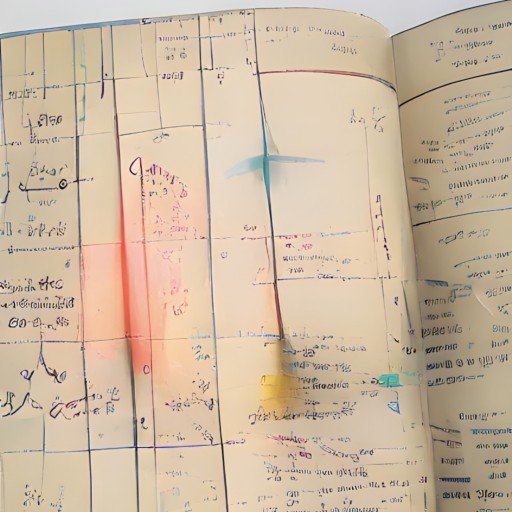Project Catalyst is described as an “experiment” with aspirations to make big, impactful discoveries. If the experiment works, we will learn what we need to move into Cardano’s Voltaire era with the knowledge and ability to execute decentralized global governance in a way that might really change history. To that end, Project Catalyst touts many of the trappings of a good experiment: some constants, some variables, a global “lab” of eager scientists, and lots of repetition. What seems to be missing is arguably what lies at the heart of useful experimentation: clear analysis of the resulting data. There are various reasons for this which we won’t delve into now, except that the very nature of the experiment - decentralization - is at least partly to blame. All we can do for now is try to be part of the solution.
Here is a look at some data results from the first nine rounds of the experiment.
A good place to start a tour of Project Catalyst Data is to look at how the overall budget has grown over the first two years of the experiment. Fund 1 was run on “monopoly money” and pure excitement. Fund 2 opened up the treasury with $250K on the table. Then the pot doubled every round - six times in a row, reaching $16M in just six more rounds. This rapid growth was successful in stirring up lots of interest and excitement in the existing community and attracting new participants to Cardano.

As anyone who has been challenged by the “Grain of rice” fable knows, indefinite doubling is not actually sustainable. Project Catalyst turned this corner at Fund 9 when the budget stayed stable at $16M. At this point, we expect this budget stabilization to last for the next foreseeable rounds as we turn our attention to helping the experiment to mature in other dimensions.

So did the growing fund attract growing numbers of proposals? It sure did! Traction was slow through Fund 5, with Catalyst struggling to attract even a couple hundred proposals - even with $2M on the table. However, a couple months later it was a totally different story: Proposal numbers tripled in Fund 6. Healthy growth continued in the Funds that followed. We see a similar growth pattern when we look at the dollar values of proposals submitted across the funds so far, but in the most recent, Fund 9, there is a noticeable shift. The VALUE of all proposals made a 30% jump, from ~$50M to ~$75M, while the NUMBER of proposals submitted only increased by a small notch, from ~1050 to ~1100. This means that while the number of proposals stayed essentially stable, each proposal’s budget went up a lot on average. The factors driving this increase in budget size are likely numerous.
In some cases, returning proposers had learned from experience that they were lowballing themselves - proposing modest budgets to increase their chances of winning. This can work as a way to get a foot in the door, but with some experience under their belts, proposers see the need to actually budget for a sustainable wage. Hopefully, another reason for the bigger budgets is that the community is growing some big dreams! The capabilities of the Cardano network have grown significantly over two years; what’s more, tool builders are now able to build off each other’s work and ideas. Each innovation and open-source contribution inspires the next.
What about those downvotes?
One more thing that simply cannot be ignored in these overview graphs is the bright blue-green-red evolution in voting and funding. Green represents projects that were funded - by dollar value, by the number of projects, and by percent of the whole. Blue represents projects that were approved by voters but were over budget in their category and therefore did not get funded. Red represents projects that received more “No” votes than “Yes” votes (or, to be strictly accurate, less than 15% more Yeses than Nos) and were therefore “not approved” and were not eligible for funding. We can see that in the early rounds of Catalyst, the power of the “No” vote was used with some vigor. In rounds 4 and 5, half of the proposals were not approved; those who were there might attest that there were a lot of questionable proposals in the early rounds. However, in rounds 6-7-8, there was a steady shift in a different direction. Proposals in each round received more and more voter approval until, in Fund 8, roughly 80% of proposals were approved by voters - both in terms of the number and value of proposals. With approvals so high, getting funded was simply a matter of who got the MOST approval and fit into the budget. Funded proposals totaled 367, while 481 approved proposals were left out in the “over budget” club.

In Fund 9, the approval rate drops like a rock - from 80% to 40%. On a basic level, this means that the “thumb down” voting option was used more often, by more people, than ever before. (Funds 4-5 had similar disapproval rates, but there were also far fewer participants overall in those rounds.) Any casual observer of Catalyst may have heard about this voting shift, as it seemed to strike a sour chord with many. Getting disapproved feels bad to a proposer - noticeably worse than just landing in the drifting pile of “over-budgets” with a legion of other worthy players. There was a feeling that leaders in the community who encouraged voters to use the power of the down-vote were acting in bad faith, perhaps lacking in the community spirit of lifting each other up. These reactions are understandable, especially as a knee-jerk response to something that doesn’t feel good. However, from the impartial stance of the scientist, we must acknowledge that the down-vote IS a variable in this experiment. Seeing if it’s used and how it’s used is one element (among many) we are evaluating. Vilifying its use is well beside the point; if it exists, it should be used somehow. The questions should be - is it useful? Is it needed? Does it help the community express its will? Or does it make voting unnecessarily complicated?
Constants and Variables
One more shift to note in Fund 9 is the overall number of proposals funded, which saw its first fund-over-fund decline. This is interesting but not surprising. First, one must remember that the BUDGET stayed the same, for the first time, from Fund 8 to Fund 9. Therefore we would not expect to see the aggressive growth in funded projects that was the natural result of the doubling budgets in previous funds.

But the number of funded proposals did not just stay stable, along with the budget; on the contrary, the number of funded proposals declined more than 40%, from 367 to 213. Quite simply, this reflects the larger proposal budgets in Fund 9; the average size of winning projects jumped from ~$35K to ~$61K. (Notably, this overall result holds true even when huge-budget outliers are removed from the calculation.) More expensive projects mean less get funded for the same money. We are hopeful that at least some of this shift means that we will see great impact and results from proposal ideas and project teams that are becoming more ambitious, mature, and productive!
Lido Nation’s Catalyst Explorer

If you have questions about projects, budgets, and voting results, you can go track down the answers in our Catalyst Explorer tool! This tool was one of the lucky ones that received funding in Fund 9, and we hope you find it valuable. Comment below if you have more questions or ideas about charts that you would like to see.



Great breakdown and rewarding insights. Thank you for providing so much value to the community Lido!
Thanks for reading, and for the kind words!